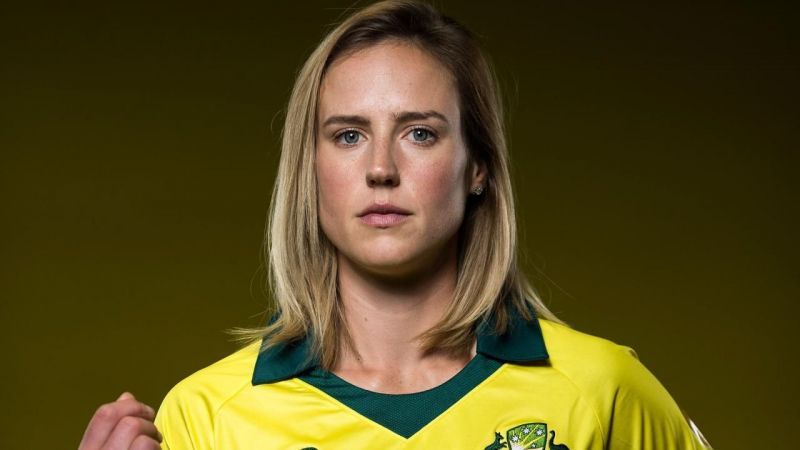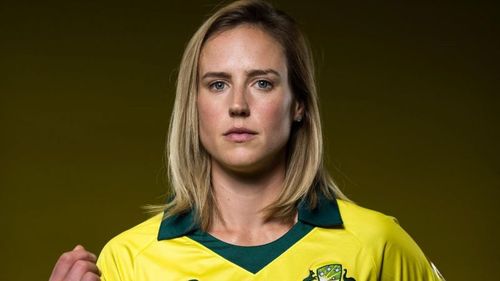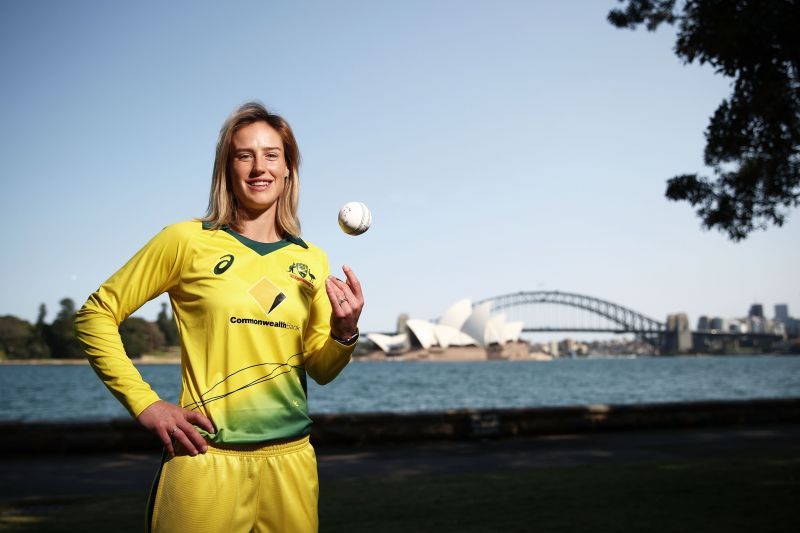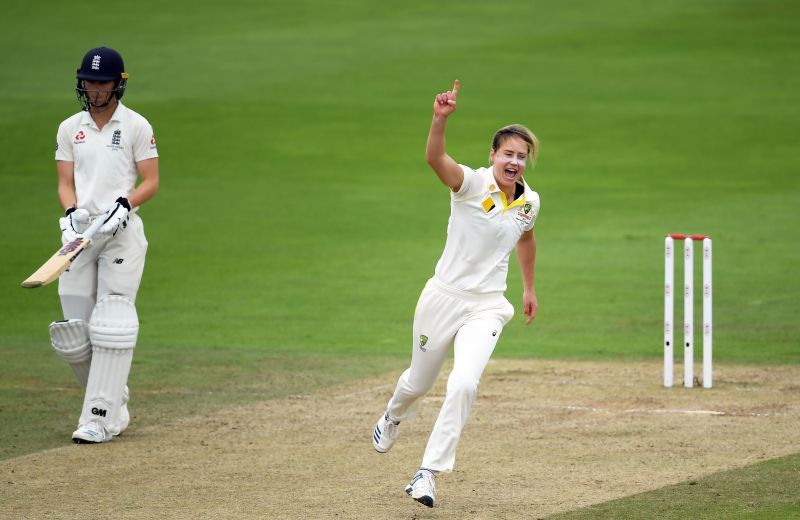
Is Ellyse Perry is the greatest Australian cricketer of the last 50 years? Statistically, yes

A decent trick question a seasoned cricket fan can ask a more casual fan is to name the greatest cricketer of all time. Most such casual fans will unhesitatingly blurt out 'Bradman' as the answer. But Bradman was merely the greatest batsman of all time. The more nuanced answer is to consider both batting and bowling and pin your vote on Sir Garfield Sobers. Despite the difficulties of comparing different eras and the different formats played, it's not crazy to consider Ellyse Perry the Sobers of women's cricket.
And so if I told you that Ellyse Perry was Australia's greatest cricketer of the last 50 years, you'd have to at least consider the possibility that I was telling the truth. Which is convenient, because that's exactly what I am telling you: Ellyse Perry is Australia's greatest cricketer of the last 50 years.
An unequal playing field
When ESPNcricinfo published an extract from Dan Liebke's 50 Greatest Australian Cricketers, which argues Ellyse Perry's place atop the Australian cricketing panteheon, the comments were rabid.
"Wouldn't make the first eleven of a club side;" "Subject to the rack the woodcock that hath penned this;" and "Dunno about that but hottest for sure," were some choice comments left on the article.
Some of these spods do not recognise just how circular this argument is. Only if women cricketers were presented with equal opportunities and faculties, would they be able to produce equivalent results.
Even in track and field, a sport women have historically enjoyed greater equality in, the fastest a woman has taken to run 100 metres is 10.49 s; the male record is 9.58 s. The longest a javelin has been thrown by a woman is 72.28 m; Jan Železný's long-standing record is 98.48 m.
There are obvious physical disparities between the two genders, and - although it is embarrassing to have to point this out - in an age when scientific literature has repeatedly shown that the average woman has a significantly higher emotional quotient than men, that is okay.
Comparing greatness across generations

What, then, makes Ellyse Perry Australia's greatest cricketer of the past 50 years? In a way, such questions are identically similar to the cross-epochal comparisons we constantly engage in. Tendulkar! No, Kohli! Smith! No, Viv!
When such diatribes became scatologically painful, human beings - like always - devise a system that would settle the issue for once and for all. Born was a method of analysis, perfected by Cricinfo's Anantha Narayanan, which ruled that 'Richards remains the 50-overs king, but Virat Kohli could possibly match his numbers in the future'.
The immediately palpable benefits of such a system are that it dissolves the disparities spawned by a heterogenous gradient of initial endowments. It puts more emphasis on efficiency of skill usage, and in a sport like women's cricket, where the disparity in endowment is not merely constituted by skill but also opportunities, it becomes doubly relevant. In relativity lies a magnificent lens of quality.
It is pertinent to acknowledge here that at least some may question the evident nonchalance exhibited by this system towards 'skill'-level. My answer to these proponents is that all players who feature in these lists would inevitably have crossed a high-roof of skill.
This is, effectively, an attempted quantification of who was best at their sport during their time, and by what degree: as I argue comparisons across sports should be. If you can think of a more rounded system, dear reader, I'd be chuffed to read you in the comments.
Above is a list of Australia's greatest ODI bowlers of the last half-century. Dennis Lillee had the lowest average - a mouth-watering 20.82. But he also played in an epoch during which the global average for all batsmen and bowlers was no higher than 27.30, the lowest of all periods under consideration. Hence, his feat is not as impressive as it might first appear.
Similarly, Glenn McGrath averaged just over 22 - but the global average for all players during his time was 1.78 runs lesser than during Mitchell Starc's time, which puts Starc on a higher pedestal.
A same template can be conjured for batsmen too:
At this point, it may have become obvious that there is a hurdle: the difference between the forerunning bowler's average from the worldwide average during his times is 8.99; for the batsmen, it is 23.78 (see MG Bevan).
This disparity can be nullified by multiplying the differences in either of the averages by an appropriate factor. In all Men's ODI history, Rashid Khan is the bowler with the most superior bowling average; Virat Kohli's is the most supreme batting average (with minimum 50 ODIs played).
The difference between Kohli's 59.34 and the sport's historical aggregate average (30.05) is 2.527 times the difference between Rashid's 18.55.
Hence, we have a multiplicative factor:
The only considerable all-rounders that apparate in this discussion are Shane Watson and Andrew Symonds. However, despite the addition of their weighted bowling impacts to their batting figures, they do not benefit much.
A chronological sequence of batters and bowlers can thus be obtained:
Keeping this example in mind, the same can be done for women cricketers. The factor of multiplication is 3.07.
Accordingly, for all-rounders like Perry, their weighted bowling figures are summed with their batting aggregates. (However, there is chance this may do injustice to part-time bowlers like EP's teammate and captain Meg Lanning, who has bowled 132 deliveries in ODI cricket to take a singular wicket - hence, the qualifier to be considered an 'all-rounder' is a minimum of 500 deliveries bowled or faced in one's secondary skill.)
It is staggering to look at the sheer weight of numbers of some of these women, and reflect upon their pathetic unfamiliarity:
Still, improved measures can be sought. The qualifier of 30 matches skews this list in favour of various hits-and-misses; in the men's bowling charts, Shaun Tait and Doug Bollinger thus make the list, though neither was able to sustain their form for a period of time. Similarly, Brownyn Calver, the glue from New South Wales that tops the women's batting charts, has only 3 fifties with a high score of 81 not out. Charmaine Mason played in only 46 ODIs.
Of course, much of this is due to limited scheduling, but at the same time it shrinks the sample space to a point obfuscating comparison. (In fact, part of the reason why I included this was to document these extraordinary but esoteric numbers.)
This is just what I did - expanding the qualifier mark to 50 ODIs. Consequently, a cross-format list of the greatest Aussie male and female players can be obtained:
Evidently, Lanning is Ellyse Perry's only competitor.
This should not be a surprise. Since her debut in 2011, 'The Meg' has averaged 55 at a strike-rate of 94 in one-day internationals, the highest of any women with at least 30 ODIs. In T20Is, she averages 36 while striking at 115, a remarkable figure in a pubescent format. She was Wisden's Leading Female Cricketer of 2015, and with a 45-ball century under her belt (the fastest in the sport), Lanning is a giant of the format.
Yet, perspective needs to be added. Since 2013, Ellyse Perry has taken her game up to a totally different level - with an average of 70.58 in 58 ODIs and opening the bowling for Australia in every format. She is effectively 'two players in one': a monicker constantly offered to South Africa's Jacques Kallis, whose value itself she outstrips. For any period of seven years, Ellyse Perry from 2013 to 2020 has been more valuable than Tendulkar in his golden run of form from 1996 to 2003, or Smith in the same period.

It is equally crucial to evaluate Lanning from a more wholesome angle. Lanning has played only 82 one-dayers: If you increased the qualifier to 100 ODIs, Ellyse Perry would trounce everybody else. In Tests, she has famously averaged 110 in this time - a number that itself crushes all her challengers and seats her firmly on top of the pile (Lanning averages 23).
In fact, had it not been for the telling smallness of the sample size of their Test careers (Ellyse Perry has played 6 Tests), their Test match numbers could have been factored in too. Then, Ellyse Perry becomes almost peerless. Is she unequivocally better than Lanning? I don't say yes. However, there is a genuine argument to be made in favour of her; and to suggest she is the greatest Aussie cricketer of the last 50 years is far from ridiculous.
Ellyse Perry: 'Greatness' personified
If the aim of this article was to justify Liebke's claim, there wouldn't be the need for this statistical squabble. Liebke's affirmation is valid in itself.
There may be a dozen demerits to such an analysis; for example, it does not take into account win-contributions or multi-nation tournaments won.
Yet, under all these parameters, Ellyse Perry will likely stand apart: Australia with her have won 5 T20 World Cups and one ODI World Cup. And, as Liebke passionately argues, she has contributed massively. Whether it is a prejudice or a mere lack of understanding is unclear, for you do not have to pit Ellyse Perry against the searing pace of Jofra Archer to determine who's better at their individual sports.
If you winced painfully at least once reading this article, and you did more than once reading Liebke's extract, perhaps it depicts a natural failure to comprehend the original author's concluding sentences. So allow me to reiterate:
'And so if I told you that Ellyse Perry was Australia's greatest cricketer of the last 50 years, you'd have to at least consider the possibility that I was telling the truth.
'Which is convenient, because that's exactly what I am telling you: Ellyse Perry is Australia's greatest cricketer of the last 50 years.'